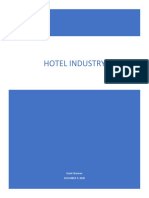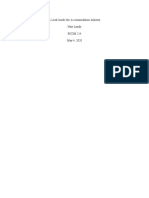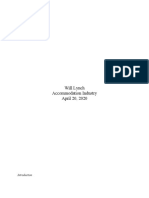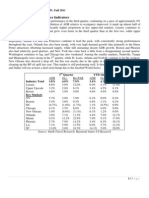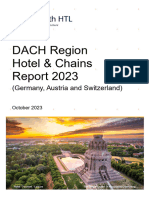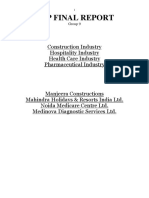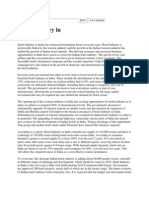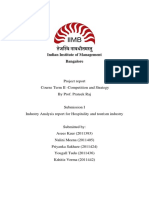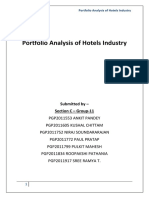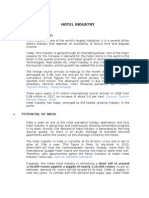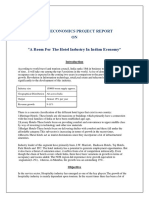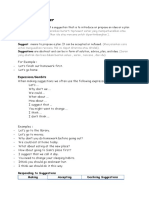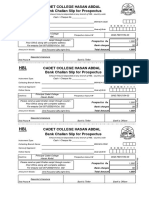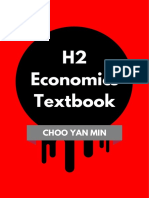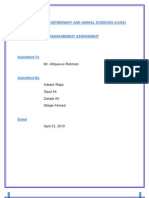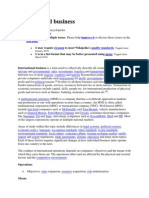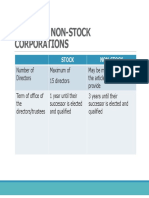0% found this document useful (0 votes)
117 views6 pagesHotel Industry Insights for Investors
The hotel industry suffered major losses due to the COVID-19 pandemic but is expected to recover by 2023. Leisure travel makes up most of the industry's revenue. While the industry's concentration is low, major brands are expanding globally. Key success factors include being part of a franchise, strong customer service, and adopting new technologies. The report provides an overview of industry trends, competitors, and customer markets to help investors make informed decisions.
Uploaded by
api-575416608Copyright
© © All Rights Reserved
We take content rights seriously. If you suspect this is your content, claim it here.
Available Formats
Download as DOCX, PDF, TXT or read online on Scribd
0% found this document useful (0 votes)
117 views6 pagesHotel Industry Insights for Investors
The hotel industry suffered major losses due to the COVID-19 pandemic but is expected to recover by 2023. Leisure travel makes up most of the industry's revenue. While the industry's concentration is low, major brands are expanding globally. Key success factors include being part of a franchise, strong customer service, and adopting new technologies. The report provides an overview of industry trends, competitors, and customer markets to help investors make informed decisions.
Uploaded by
api-575416608Copyright
© © All Rights Reserved
We take content rights seriously. If you suspect this is your content, claim it here.
Available Formats
Download as DOCX, PDF, TXT or read online on Scribd
/ 6
